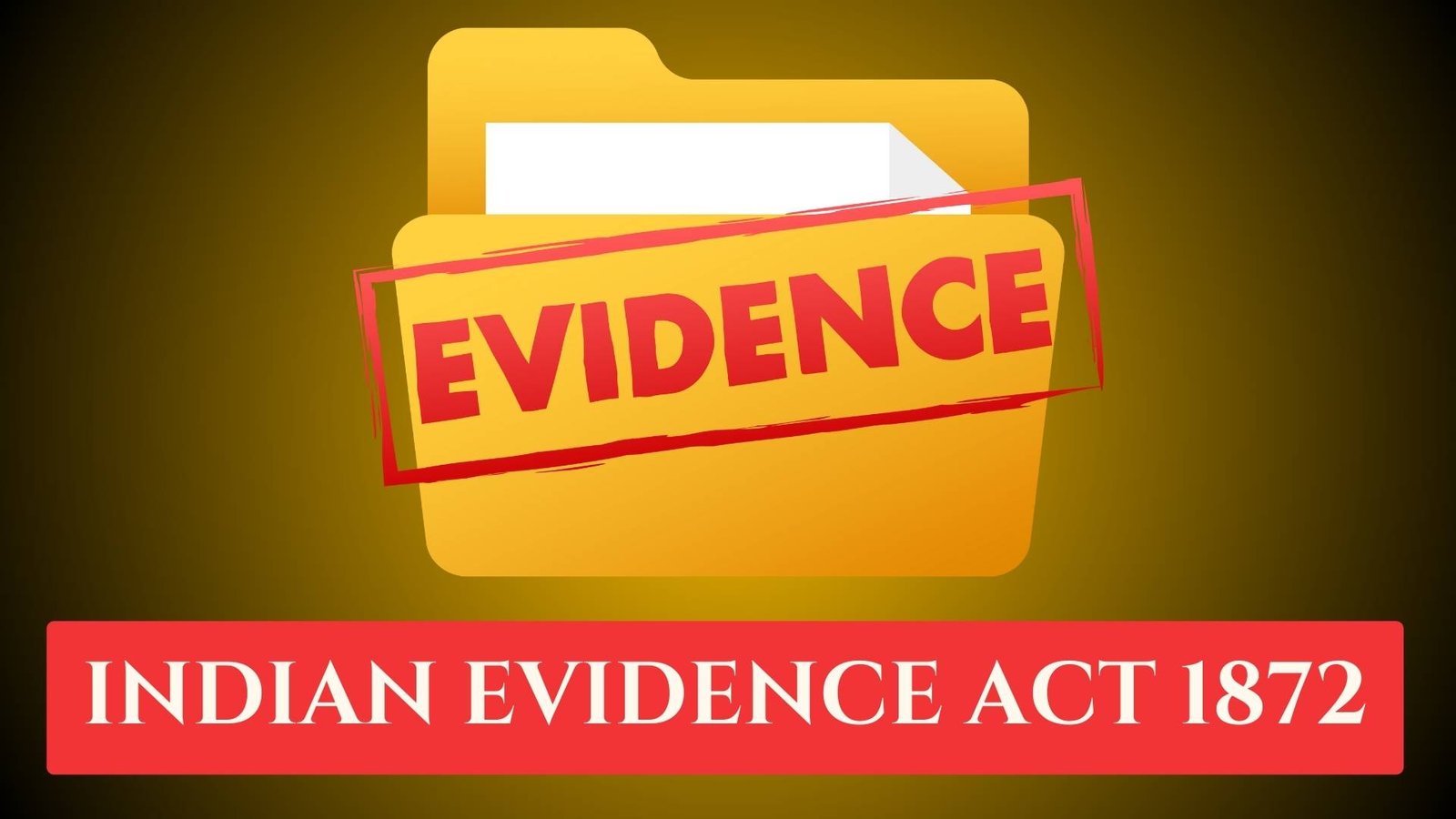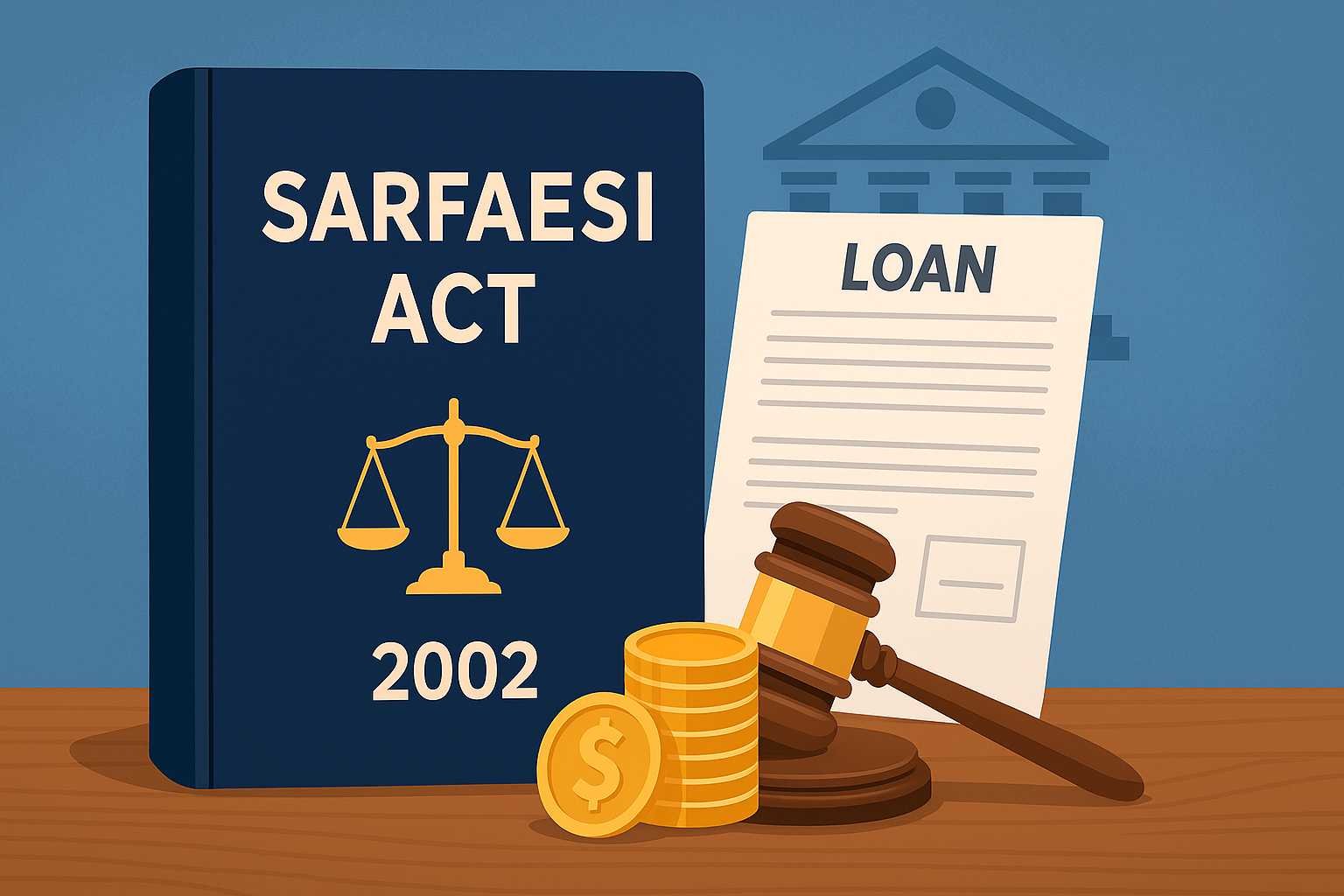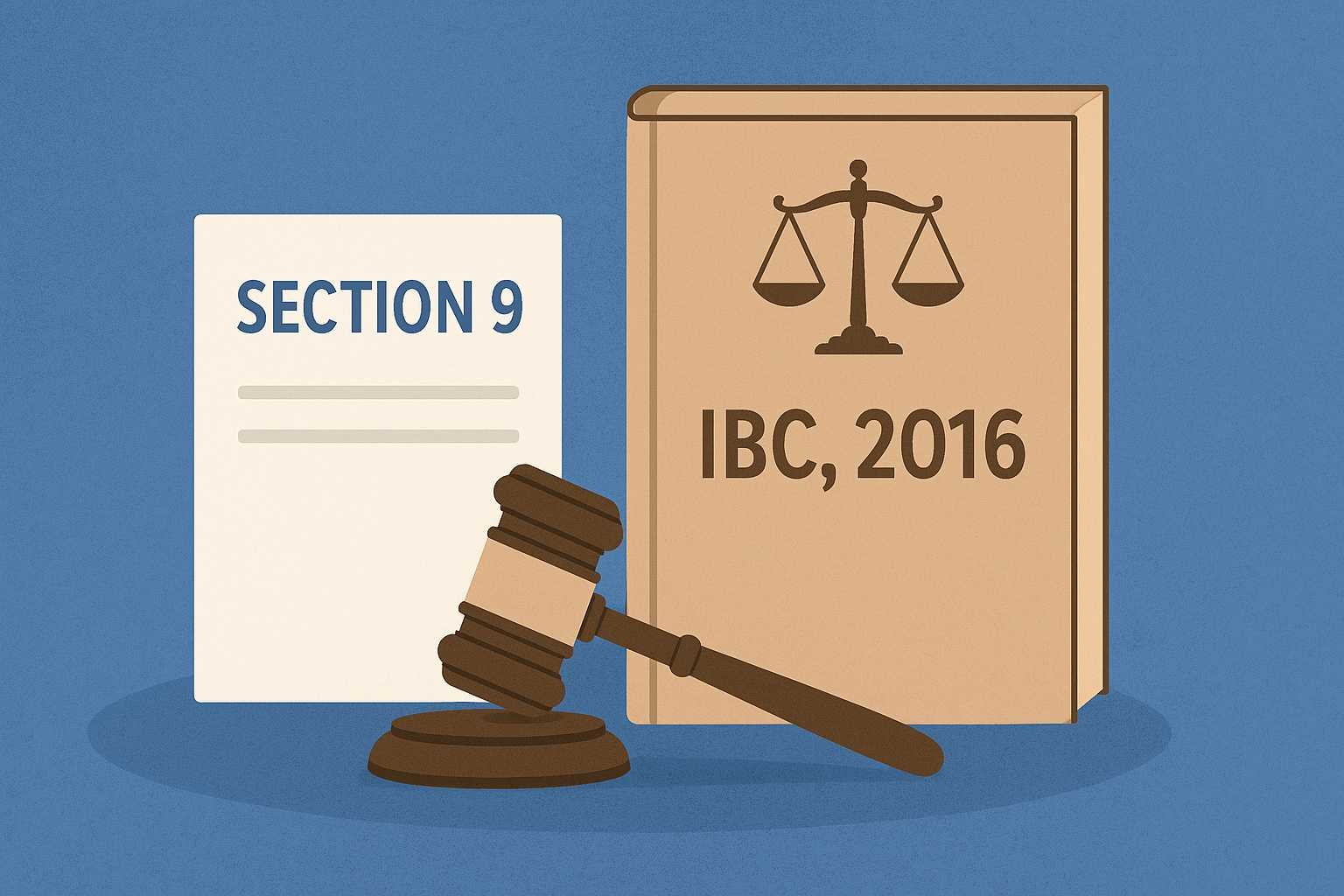On this page you will read detailed information about Indian Evidence Act 1872.
As you navigate the complex world of Indian law, understanding the Indian Evidence Act of 1872 is crucial. This foundational piece of legislation governs the admissibility of evidence in Indian courts, shaping the very fabric of the legal system. Whether you’re a law student, legal professional, or simply an interested citizen, grasping the intricacies of this Act will provide you with valuable insights into how justice is served in India. In this comprehensive guide, you’ll explore the key provisions, principles, and applications of the Indian Evidence Act, equipping yourself with essential knowledge to better comprehend legal proceedings and their outcomes.
Overview of The Indian Evidence Act 1872
The Indian Evidence Act 1872 is a cornerstone of the Indian legal system, providing a comprehensive framework for the admissibility and evaluation of evidence in judicial proceedings. This pivotal legislation, which came into force on September 1, 1872, was introduced by Sir James Fitzjames Stephen to bring uniformity and consistency to the law of evidence across India.
Structure and Scope
The Act is divided into three main parts, comprising 11 chapters and 167 sections. These sections cover crucial aspects such as:
- Relevancy of facts
- Burden of proof
- Types of evidence
- Examination of witnesses
- Admissibility of confessions
According to legal experts, the Act applies to all judicial proceedings in India, including courts-martial, but excludes affidavits and arbitration proceedings.
Key Features and Provisions
The Indian Evidence Act 1872 establishes several fundamental principles that govern the presentation and evaluation of evidence in court:
- Relevancy: The Act outlines rules for determining the admissibility of evidence and the exclusion of irrelevant or unfair information.
- Burden of Proof: It defines the obligations of parties to establish facts necessary to prove their case in both civil and criminal matters.
- Witness Examination: The Act provides guidelines for the examination-in-chief, cross-examination, and re-examination of witnesses.
Legal scholars note that the Act has evolved over time, with amendments addressing modern concerns such as the admissibility of electronic records and expert evidence.
By providing a standardized approach to evidence across India, the Indian Evidence Act 1872 plays a crucial role in ensuring fair and consistent judicial proceedings, making it an indispensable component of the Indian legal system.
Key Definitions in The Indian Evidence Act
The Indian Evidence Act, 1872 establishes crucial definitions that form the foundation of evidentiary law in India. Understanding these key terms is essential for navigating the complexities of the legal system.
Facts and Relevance
The Act defines “fact” as anything perceivable by the senses or a mental condition. “Relevant” facts are those connected to another fact in ways specified by the Act. “Facts in issue” are those necessary to prove a right, liability, or disability in a case.
Evidence and Proof
“Evidence” encompasses statements made before the court and documents produced for inspection. The Act also defines the concepts of “proved,” “disproved,” and “not proved.” A fact is considered “proved” when the court believes it exists or considers its existence highly probable.
Documents and Admissions
The Act defines “document” as any matter expressed on a substance using letters, figures, or marks. “Admission” refers to a statement that suggests the existence of a fact. These definitions are crucial in determining the admissibility of evidence in court proceedings.
Burden of Proof and Presumptions
The ipc crpc indian evidence act outlines the concept of “burden of proof,” which determines which party is responsible for proving a fact. It also defines various levels of “presumption,” where the court may assume certain facts to be true unless disproved.
Understanding these key definitions is essential for anyone dealing with the indian evidence act 1872. They provide the framework for determining what information can be presented in court and how it will be evaluated, ensuring a fair and consistent application of the law across all judicial proceedings in India.
Types of Evidence Covered in The Act
The Indian Evidence Act 1872 recognizes several key types of evidence that can be presented in court. Understanding these categories is crucial for legal professionals working within the Indian legal system.
Oral and Documentary Evidence
The two primary forms of evidence covered by the Indian Evidence Act are oral and documentary evidence. Oral evidence refers to statements made by witnesses in court, while documentary evidence includes written documents and electronic records presented for the court’s inspection.
Direct and Circumstantial Evidence
The Act also distinguishes between direct and circumstantial evidence. Direct evidence directly proves a fact without requiring inference, such as an eyewitness account. Circumstantial evidence, on the other hand, requires the court to draw inferences to establish facts.
Real and Scientific Evidence
The Indian Evidence Act 1872 acknowledges the importance of physical objects and scientific methods in legal proceedings. Real evidence includes tangible items related to the case, while scientific evidence encompasses forensic analysis, DNA testing, and other technical examinations.
Electronic Evidence
With the advancement of technology, the Act has been updated to include provisions for electronic evidence. Sections 65A and 65B specifically address the admissibility of electronic records, reflecting the growing importance of digital information in legal matters.
By encompassing these diverse types of evidence, the Indian Evidence Act, IPC, CrPC, and related statutes provide a comprehensive framework for presenting and evaluating evidence in Indian courts.
In the previous post, we had shared information about Creation of Trust under the Indian Trust Act 1882, so read that post also.
Relevancy of Facts Under The Indian Evidence Act
The Indian Evidence Act 1872 establishes critical guidelines for determining which facts are relevant and admissible in legal proceedings. Understanding these rules is essential for effectively navigating the Indian legal system.
Defining Relevancy
The Indian Evidence Act does not provide a specific definition of “relevancy” or “relevant fact”. Instead, it outlines circumstances under which one fact becomes pertinent to another. Relevancy is determined based on principles of logic and likelihood, serving as the connecting link between a statement for proof and the statement needing to be proven.
Types of Relevant Facts
The Act specifies various categories of relevant facts, including:
- Facts that elucidate or present the truth in question
- Facts that support or challenge an inference
- Facts that establish the character of a person or thing
- Facts that pinpoint the time and place of occurrence
- Facts that reveal the relationship between parties
Admissibility vs. Relevancy
It’s crucial to distinguish between relevancy and admissibility. While all admissible evidence is relevant, not all relevant evidence is admissible in a court of law. Admissibility is narrower in scope and is based on specific legal provisions.
Key Sections of the IPC, CrPC, and Indian Evidence Act
Sections 5 to 55 of the Indian Evidence Act outline various methods through which the correlation between different facts can establish the concept of relevant facts. Sections 6, 9, and 11 provide specific guidance on the relevancy of facts. These provisions work in conjunction with the Indian Penal Code (IPC) and Code of Criminal Procedure (CrPC) to form a comprehensive framework for evidence in Indian courts.
Understanding the intricacies of fact relevancy under the Indian Evidence Act 1872 is crucial for legal practitioners and those involved in the judicial process. It ensures that only pertinent information is considered, promoting fair and efficient legal proceedings.
Who May Testify as Witnesses Per The Act
The Indian Evidence Act 1872 provides comprehensive guidelines on who can testify as a witness in legal proceedings. This crucial aspect of the indian evidence act ensures fair and just testimonies in courts across the country.
Competency of Witnesses
According to Section 118 of the Indian Evidence Act, a competent witness is one who can understand questions posed by the court and provide rational answers. The act does not discriminate based on age, gender, or physical condition. Even children as young as 6-7 years old can testify if the court deems them capable of giving rational testimony.
Special Considerations
The IPC CRPC Indian Evidence Act makes provisions for individuals with unique circumstances:
- Persons under vows of silence or those who are deaf and mute can testify through writing or signs.
- Judges and magistrates are not compelled to answer questions about their conduct in court, unless ordered by a superior court.
- Accomplices to a crime are considered competent witnesses, though their testimony requires corroboration from independent sources.
Exceptions and Limitations
While the Indian Evidence Act 1872 is generally inclusive, there are some exceptions:
- Individuals unable to understand questions or provide rational answers due to mental illness, extreme old age, or similar causes may be deemed incompetent.
- The court has the discretion to determine a witness’s competency based on their understanding and ability to provide coherent testimony.
It’s important to note that there is no minimum or maximum number of witnesses required to prove a fact. The court can rely on a single credible witness if their testimony is found reliable, emphasizing quality over quantity in the pursuit of justice.
Examination of Witnesses According to The Indian Evidence Act
The Indian Evidence Act 1872 provides a comprehensive framework for the examination of witnesses in legal proceedings. This crucial aspect of the judicial process ensures fairness and thoroughness in gathering testimony.
Order of Examination
The Act specifies three main types of witness examination: examination-in-chief, cross-examination, and re-examination. This structured approach allows both parties to present their case and challenge opposing testimony effectively.
Examination-in-chief is conducted by the party calling the witness, allowing them to present relevant facts. Cross-examination, performed by the opposing party, tests the witness’s credibility and veracity. Finally, re-examination gives the original party a chance to clarify any issues raised during cross-examination.
Rules and Restrictions
The Indian Evidence Act sets forth several important rules governing witness examination:
- Leading questions are generally prohibited during examination-in-chief and re-examination, except for introductory or undisputed matters.
- The court has the discretion to allow a party to cross-examine their own witness if they appear hostile.
- Witnesses may refresh their memory by referring to documents they created or read around the time of the events in question.
Judicial Oversight
According to the Act, judges play a crucial role in overseeing the examination process. They have the authority to:
- Decide on the admissibility of evidence based on its relevance to the case.
- Compel witnesses to answer questions, even if the answers may be self-incriminating.
- Forbid indecent, scandalous, or offensive questions intended to insult or annoy the witness.
By adhering to these guidelines set forth in the Indian Evidence Act 1872, the examination of witnesses contributes to a fair and thorough legal process, ensuring that all relevant facts are brought to light in court proceedings.
Documentary Evidence Provisions in The Act
Types of Documentary Evidence
The Indian Evidence Act 1872 recognizes two primary types of documentary evidence: primary and secondary. Primary evidence refers to the original document itself, while secondary evidence includes copies, transcripts, or oral accounts of the document’s contents. The Act emphasizes the importance of presenting original documents whenever possible, adhering to the “best evidence rule” outlined in Section 64.
Admissibility of Secondary Evidence
While the Indian Evidence Act generally requires the production of primary evidence, it allows for the admission of secondary evidence under specific circumstances. Section 65 outlines these exceptions, which include cases where the original document has been lost, destroyed, or is in possession of the opposing party. This provision ensures that valuable evidence is not excluded due to practical constraints.
Electronic Records as Evidence
With the advancement of technology, the IPC CRPC Indian Evidence Act has been updated to address the admissibility of electronic records. Sections 65A and 65B, introduced in 2000, provide guidelines for the acceptance of electronic evidence in court. These sections require proper certification by the person in charge of the computer system, ensuring the authenticity and reliability of digital evidence.
Presumptions and Authentication
The Act establishes several presumptions regarding the authenticity of certain documents. Sections 79-90 provide for the presumption of genuineness for various types of documents, including certified copies, government publications, and documents over 30 years old. These presumptions streamline the process of admitting documentary evidence while maintaining its integrity within the legal framework.
By understanding these key provisions of the Indian Evidence Act 1872, legal practitioners can effectively navigate the complex landscape of documentary evidence in Indian courts.
Presumptions Under The Indian Evidence Act 1872
The Indian Evidence Act 1872 establishes several key presumptions that play a crucial role in legal proceedings. These presumptions allow courts to make certain assumptions without requiring additional evidence, streamlining the judicial process while maintaining fairness.
Types of Presumptions
The Act recognizes three main categories of presumptions:
- “May presume”: The court has discretion to consider a fact as proven or require further evidence.
- “Shall presume”: The court is legally obligated to presume a fact as proven unless rebutted.
- “Conclusive proof”: The court cannot allow evidence to refute a fact declared as conclusive proof.
These presumptions help facilitate the administration of justice by making legal proceedings more efficient and equitable.
Key Presumptions in the Act
Some notable presumptions under the Indian Evidence Act include:
- Presumption of legitimacy (Section 112): A child born during a valid marriage is presumed legitimate.
- Presumption of death (Section 108): A person not heard from for seven years is presumed dead.
- Presumption of dowry death (Section 113B): In cases of unnatural death within seven years of marriage, with evidence of dowry-related cruelty, the court presumes dowry death.
According to legal experts, these presumptions shift the burden of proof, requiring the opposing party to provide evidence to rebut the presumption.
Impact on Legal Proceedings
The presumptions established by the Indian Evidence Act and IPC CRPC significantly influence how cases are tried and decided. They provide a framework for courts to make reasonable assumptions based on common sense and experience, while still allowing for the presentation of contrary evidence. This balance helps ensure that justice is served efficiently and fairly within the Indian legal system.
Frequently Asked Questions on the Indian Evidence Act 1872
The Indian Evidence Act 1872 governs the rules and procedures for presenting evidence in Indian courts. It applies to all judicial proceedings before any court in India, covering both civil and criminal cases. The Act defines what constitutes admissible evidence and outlines guidelines for its relevancy and weight in legal proceedings.
The Indian Evidence Act is divided into three main parts:
i) Relevancy of Facts
ii) Mode of Proof
iii) Production and Effect of Evidence
It covers crucial aspects such as the burden of proof, types of evidence, examination of witnesses, and presumptions. The Act also recognizes various forms of evidence, including oral testimony, documentary evidence, and expert opinions.
Since its enactment in 1872, the Indian Evidence Act has undergone several amendments to keep pace with technological advancements and changing societal needs. Notable amendments include provisions for the admissibility of electronic evidence and expert opinions on electronic records. For instance, the Information Technology Act of 2000 introduced significant changes to accommodate digital evidence in legal proceedings.
Several court decisions have shaped the interpretation of the Indian Evidence Act 1872. Key cases include:
i) State of Maharashtra v. Praful Desai (2003): Clarified rules for admitting electronic evidence
ii) R v. Abdul Rahim (1949): Established the concept of ‘similar facts’ evidence
iii) Arjun Pandit Rao vs. Kailash Kishanrao (2022): Made furnishing of certificates mandatory for electronic evidence admissibility
These cases have significantly influenced the application of the Act in modern legal practice.
Conclusion
In conclusion, the Indian Evidence Act of 1872 remains a cornerstone of the Indian legal system, providing critical guidelines for the admissibility and evaluation of evidence in court proceedings. As you navigate legal matters, understanding this Act’s key provisions is essential. From defining relevant facts to outlining the rules of oral and documentary evidence, the Act offers a comprehensive framework for jurisprudence. While amendments have modernized certain aspects, the core principles endure. By familiarizing yourself with the Indian Evidence Act, you’ll be better equipped to engage with the legal process, whether as a legal professional or an informed citizen. Its continued relevance underscores the enduring importance of fair and systematic evidence evaluation in the pursuit of justice.
Disclaimer
The information and services on this website are not intended to and shall not be used as legal advice. You should consult a Legal Professional for any legal or solicited advice. While we have good faith and our own independent research to every information listed on the website and do our best to ensure that the data provided is accurate. However, we do not guarantee the information provided is accurate and make no representation or warranty of any kind, express or implied, regarding the accuracy, adequacy, validity, reliability, availability, or completeness of any information on the Site. UNDER NO CIRCUMSTANCES SHALL WE HAVE ANY LIABILITY TO YOU FOR ANY LOSS OR DAMAGE OF ANY KIND INCURRED AS A RESULT OR RELIANCE ON ANY INFORMATION PROVIDED ON THE SITE. YOUR USE OF THE SITE AND YOUR RELIANCE ON ANY INFORMATION ON THE SITE IS SOLELY AT YOUR OWN RISK. Comments on this website are the sole responsibility of their writers so the accuracy, completeness, veracity, honesty, factuality and politeness of comments are not guaranteed.
So friends, today we talked about Indian Evidence Act 1872, hope you liked our post.
If you liked the information about Indian Evidence Act 1872, then definitely share this article with your friends.
Knowing about laws can make you feel super smart ! If you find value in the content you may consider joining our not for profit Legal Community ! You can ask unlimited questions on WhatsApp and get answers. You can DM or send your name & number to 8208309918 on WhatsApp








